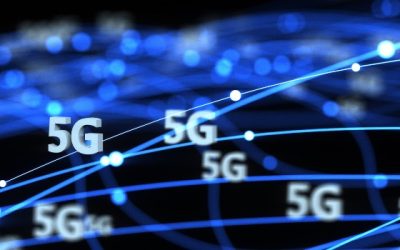In today’s digital era, businesses and organizations worldwide, regardless of their size, face a significant threat from cyber-attacks. The alarming rise in sophisticated cyber threats, especially ransomware, has become a critical concern. Ransomware attacks have not only affected large corporations but also small-scale businesses, causing operational disruptions and significant financial losses. In recent years, countries like the United States, Taiwan, and Japan have been the primary targets, with various sectors, including religious organizations and hospitals, falling victim to these attacks.
Decoding Ransomware: A Modern Cyber Menace
Ransomware represents a formidable challenge in cybersecurity. This crypto-level virus, often hidden in seemingly innocuous files, encrypts vital data, holding it hostage until a ransom is paid. The impact is immediate and severe, disrupting operations and leading to substantial profitability losses.
Impact on Specific Sectors:
-
- Hospitals and Healthcare Systems: In 2023, 46 hospital systems encompassing 141 hospitals were impacted by ransomware, with at least 32 experiencing the theft of protected health information.
- Schools and Universities: At least 108 school districts and 72 higher education institutions were affected by ransomware, showing a significant increase from previous years.
- Municipal and State Governments: At least 95 government entities were impacted in 2023, though this number shows a decrease compared to 2022.
- Private Sector: Prominent companies like Boeing, MGM Resorts, and others were targeted, but the exact number of incidents in the private sector is hard to determine due to underreporting and intentional misinformation.
Evolution and Trends:
-
- The emergence of “ransomware 2.0” has been observed, which goes beyond file encryption and threatens to leak stolen information.
- Ransomware groups such as LockBit, ALPHV BlackCat, and Cl0p have been particularly active.
Economic Impact:
-
- Ransoms totaling $449 million were paid in the first six months of 2023, and 2023 was projected to be the second most profitable year for ransomware actors.
- The global costs of damages caused by ransomware are expected to exceed $265 billion annually by 2031.
- The average ransom paid by small and medium-sized businesses was approximately $6,500, while large enterprises paid around $98,000.
Response and Prevention:
-
- Organizations have implemented microsegmentation strategies and Zero Trust security frameworks to protect against ransomware.
- Regular system backups and employee cybersecurity training are essential for preventing attacks.
The Need for Robust Cybersecurity Measures
To combat these challenges, the implementation of next-generation security solutions, especially for Managed Service Providers (MSPs) catering to enterprise branches or SMBs, is crucial. A unified approach involving firewall/Unified Threat Management (UTM) systems is essential. These systems integrate various security measures, including email and web filtering, intrusion detection and prevention (IDP/IDS), deep packet inspection (DPI), and malware scanning, to effectively neutralize threats.
Furthermore, these UTM systems serve as cloud-based security management consoles, streamlining the management of security policies, licensing, and billing, embodying the concept of “security as a service.”
Introducing Lanner’s L-1515: A Robust Solution for Modern Challenges
Addressing the need for high-performance, reliable cybersecurity solutions, Lanner presents the L-1515. This advanced security gateway, driven by Intel technology, is specifically designed for network security services provided by MSPs. The L-1515 is equipped with an Intel Atom® C3000 processor, offering up to 16 cores of processing power, and supports multiple high-speed Ethernet ports for comprehensive network connectivity.
The L-1515’s architecture supports a range of advanced security features. Its compatibility with Intel QuickAssist Technology enhances cryptographic and compression performance, making it particularly effective for UTM, firewall, and virtual private network (VPN) applications. The platform is also equipped with secure boot, TPM 2.0, and support for Microsoft Azure and AWS, adding layers of security and flexibility for cloud-based applications.
In terms of connectivity, the L-1515 boasts multiple Ethernet ports, including RJ-45 and SFP ports, facilitating versatile networking solutions. Its compact, fanless design makes it ideal for deployment in various environments, from branch offices to retail settings.
A Future-Proof Investment in Cybersecurity
The L-1515 represents a strategic investment for businesses looking to bolster their cybersecurity defenses. Its robust performance, coupled with advanced security features and flexible networking options, positions it as a versatile solution capable of addressing the dynamic nature of cyber threats. For MSPs and organizations seeking a reliable, scalable, and efficient way to protect their networks, the Lanner L-1515 emerges as an exemplary choice.
In conclusion, as ransomware and other cyber threats continue to evolve, the necessity for advanced, integrated cybersecurity solutions has never been more pronounced. The Lanner L-1515 stands out as an optimal solution, offering the necessary capabilities to safeguard against these emerging threats. By integrating such comprehensive security solutions, businesses can ensure data protection and operational continuity, reinforcing their digital defenses in this ever-changing landscape.








